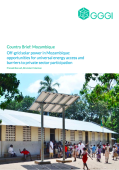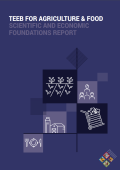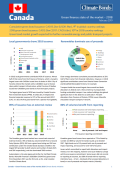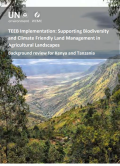
This country brief describes the significant role that the off-grid solar power sector could play in meeting Mozambique's universal electricity access goal and provides a structured overview of the key barriers hindering private sector participation for scaling-up the sector as well as recommendations to address the identified barriers.

The TEEB for Agriculture and Food: Scientific and economic foundations report addresses the core theoretical issues and controversies underpinning the evaluation of the nexus between the agri-food sector, biodiversity and ecosystem services and externalities including human health impacts from agriculture on a global scale. It argues the need for a 'systems thinking' approach, draws out issues related to health, nutrition, equity and livelihoods, presents a Framework for evaluation and describes how it can be applied, and identifies theories and pathways for transformational change.

The 2018 State of the Market report marks the seventh annual stocktake of green bonds and green finance in Canada, produced in partnership with the Climate Bonds Initiative.

This paper analyses and discusses options for addressing equity concerns in fisheries subsidy reform and calls for governments to consider the impacts of subsidies and subsidy reform on vulnerable social groups.

The aim of this report,TEEB Implementation: Supporting Biodiversity and Climate Friendly Land Management in Agricultural Landscapes - Background review for Kenya and Tanzania, is to assess the current knowledge on the values of biodiversity and ecosystem services in Tanzania and Kenya, to understand what can currently be readily assessed with respect to the interactions between climate change, biodiversity and agricultural development to look at major policy initiatives already in place in the environment and development space, and map key stakeholders.
